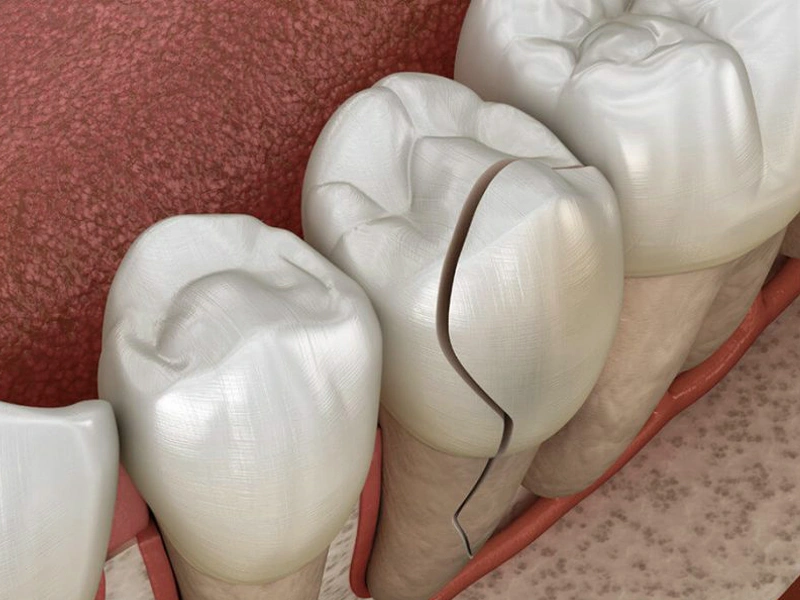REFER A FRIEND: GIVE $50, GET $50
The Impact of Cracked Teeth and How to Prevent Further Damage

Symptoms of a Cracked Tooth
- Unexplained pain when chewing or eating
- Sensitivity to hot or cold foods
- Persistent pain with no obvious cause
- Difficulty identifying the exact location of the pain

How Are Cracks in the Teeth Treated?
Cracked teeth can range from minor surface cracks to severe fractures affecting the tooth root.
- Treatment: Root canal therapy is often effective for cracks reaching the tooth's pulp. In severe cases, extraction may be necessary.
- Replacement Options: If extraction is required, we can replace the missing tooth with options like bridges, implants, or dentures.
What Kind of Cracks Can Affect the Teeth?
There are several types of tooth cracks, and the specific crack will determine the appropriate treatment. In some cases, if the crack isn't too deep, root canal therapy may be an option, allowing the natural tooth to remain in place. However, in more severe cases where the tooth is badly damaged, extraction may be necessary.
Here is an overview of the most common types of cracks:
Crazes
These are small vertical cracks that do not pose a risk to the tooth's health. They are typically surface-level scratches and are considered a normal part of tooth anatomy. While these cracks rarely require treatment for health reasons, cosmetic treatments can be performed to improve their appearance.
Oblique Supragingival Cracks
These cracks affect only the crown of the tooth and do not extend below the gum line. The cracked portion of the tooth may eventually break off, but because the tooth pulp remains unaffected, pain is typically minimal.
Vertical Furcation Cracks
These cracks occur when the roots of the tooth separate, usually affecting the nerve. The tooth may not separate completely, so root canal therapy and a crown may be able to save the tooth.
Oblique Subgingival Cracks
These cracks extend below the gum line and often into the jawbone. A portion of the tooth may remain attached. Treatment often involves periodontal surgery, endodontic treatment, and a crown.
Oblique Root Cracks
These cracks generally do not affect the tooth’s surface but are located below the gum line and possibly below the jawbone. Depending on the proximity to the tooth’s surface, root canal therapy may be an option, though extraction is often the only solution for this type of crack.
Vertical Apical Root Cracks
These cracks occur at the apex (tip) of the root. Although the tooth may not require extraction from a dental perspective, the intense pain often leads patients to request extraction. Root canal therapy may offer temporary relief, but most teeth with vertical apical root cracks are eventually extracted.




